Are you expecting a new addition to your family and need to take some time off work? Writing a maternity leave application can feel daunting, but it doesn't have to be! In this article, we'll provide you with a simple and effective letter template to help you request your well-deserved leave smoothly. So, if you're ready to navigate this important step in your journey, keep reading to learn more!
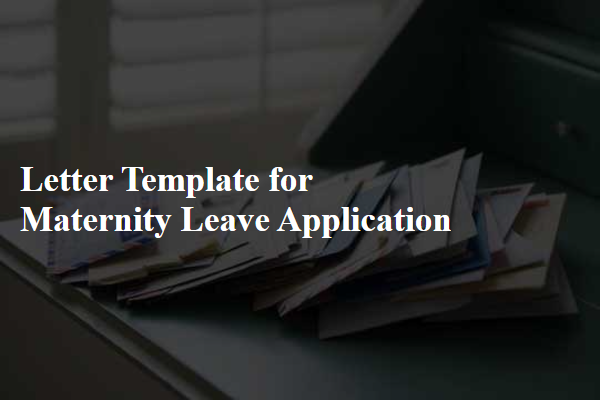
Greeting and Employee Information
Maternity leave applications are important formal documents for employees in workplaces. This application typically begins with a respectful greeting directed to the employer or HR department. The employee's full name, job title, and department are essential details to include, providing the necessary identification for the application. Additionally, the expected due date of the child is crucial information, ensuring clarity regarding the leave period. Including contact information, such as an email address or phone number, allows for swift communication during the maternity leave preparation. This detailed context supports clear understanding and smooth processing of the leave request.
Reason for Leave and Start Date
Maternity leave is a critical period for new parents, particularly mothers preparing for childbirth and recovery. The expected start date for maternity leave is typically around 4 to 6 weeks before the due date, depending on individual circumstances and medical recommendations. Most countries have specific maternity leave policies, with durations varying from 12 weeks in the United States to up to 52 weeks in countries like the United Kingdom, ensuring new mothers have adequate time for rest and bonding. Proper documentation, such as a doctor's note confirming the pregnancy, is often required for application processes in workplaces. Communicating effectively with human resources about the leave schedule and necessary adjustments ensures a smooth transition during this significant life event.
Duration and Expected Return Date
Maternity leave is an essential period for new mothers to recover and bond with their newborns. This leave typically lasts for 12 weeks in many jurisdictions, allowing mothers time to navigate both physical recovery and parental responsibilities. The expected return date should factor in the delivery date, adjusting for any potential medical complications or extended recovery needs. Clear communication with the employer regarding leave duration and return-to-work expectations ensures a smooth transition back into the workplace, fostering understanding and support during this significant life event.
Contact Information During Leave
Maternity leave policies ensure a supportive transition for new mothers. Companies generally require employees to provide contact information during the leave period. This information can include personal phone numbers, personal email addresses, and an emergency contact person. Clear guidelines typically outline the need for availability to discuss pressing work-related matters. The Family and Medical Leave Act (FMLA) protects the job security of employees taking maternity leave, allowing up to 12 weeks off in a 12-month period for eligible employees. Key dates, such as the expected due date and the planned start and end of the leave, should also be included for proper planning and coverage during the absence.
Assurance of Task Management and Transition Plan
Maternity leave is a crucial period for new parents, especially for those expecting a child. During this time, ensuring smooth task management and transition plans is essential for maintaining productivity. Employers need to implement a comprehensive transition strategy, which may include delegating responsibilities to team members or hiring temporary replacements. Clear communication is vital, highlighting project deadlines, ongoing duties, and crucial contacts for smooth operations. The employer should also document the process for transferring knowledge on ongoing projects and responsibilities, ensuring that team members have access to necessary resources. Additionally, regular check-ins prior to leave can help address any unresolved issues and prepare the team for adjustments during the maternity period.
Letter Template For Maternity Leave Application Samples
Letter template of maternity leave request for self-employed individuals
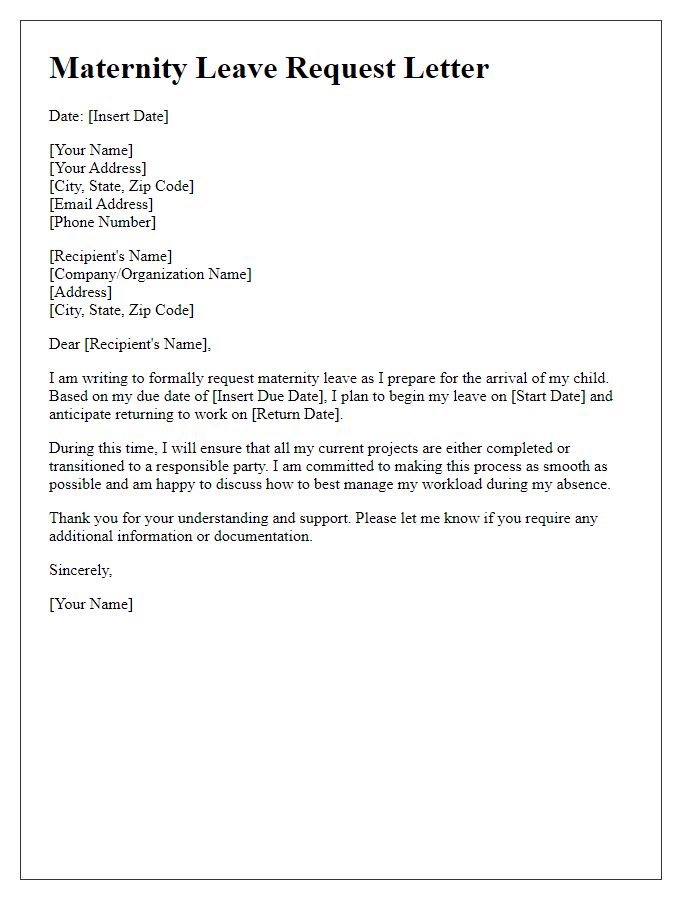

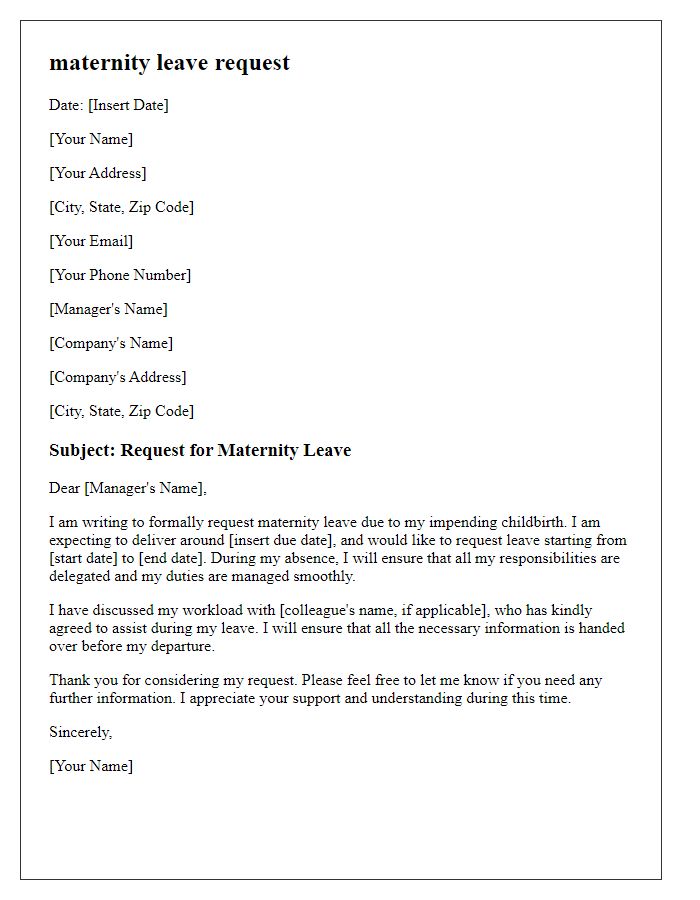
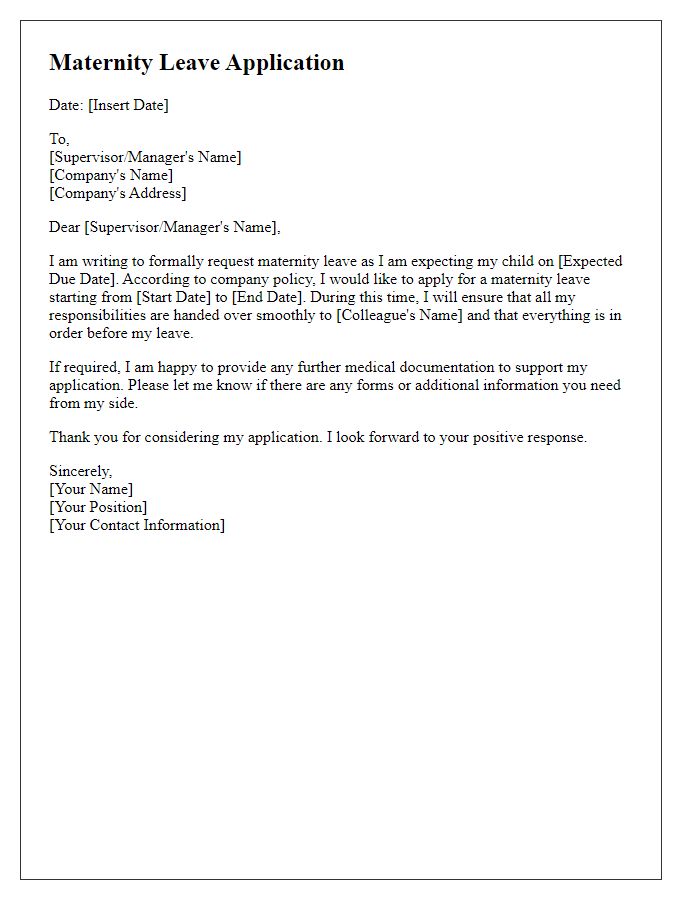
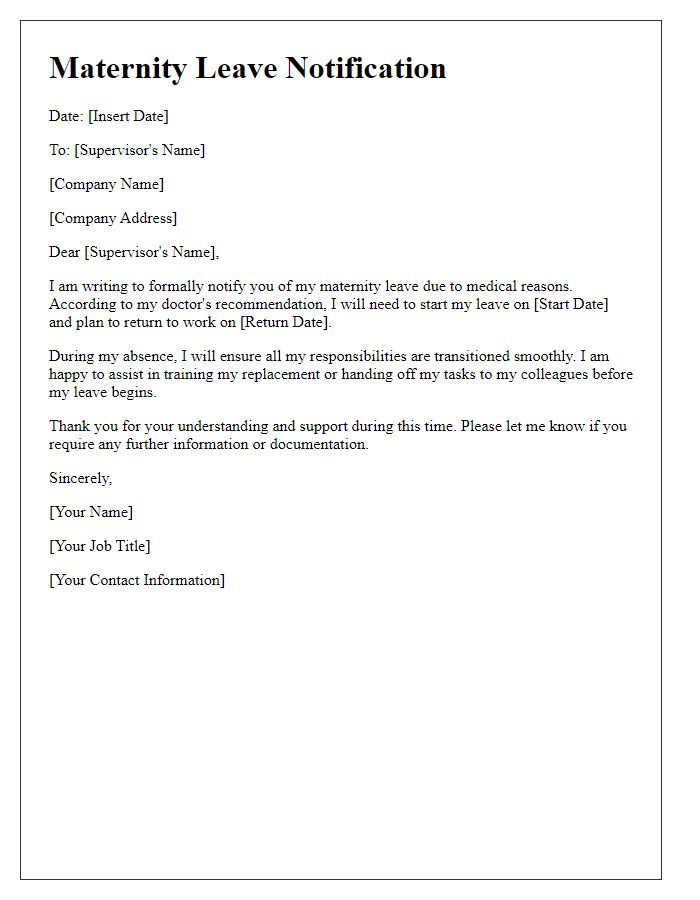
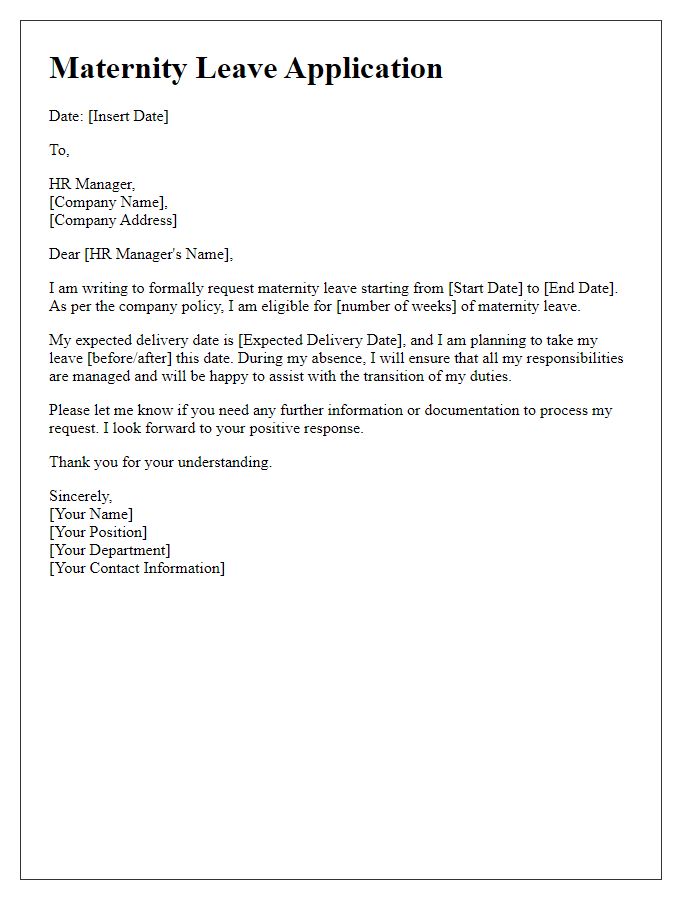
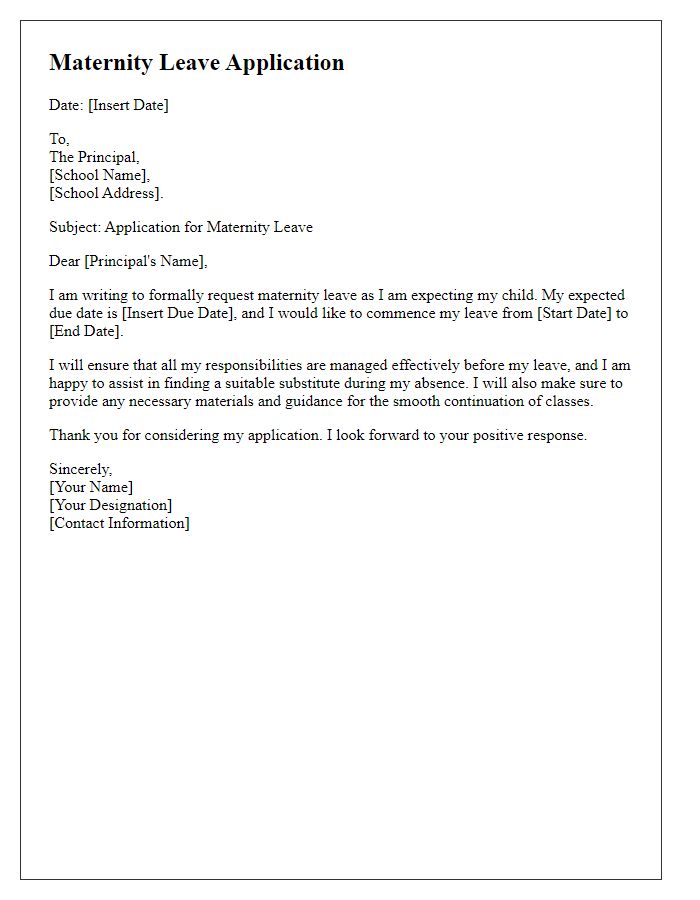
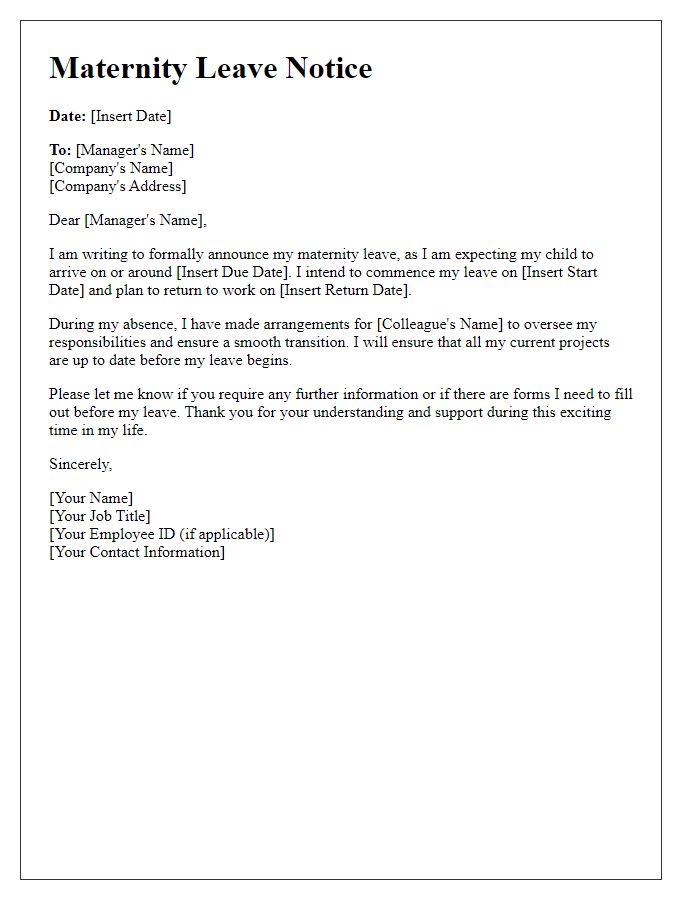
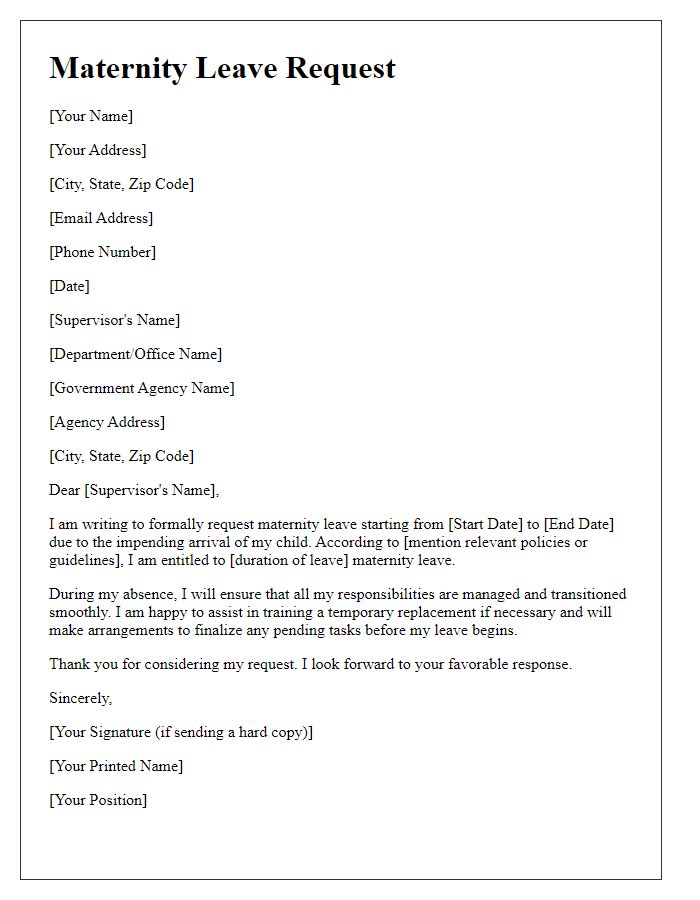
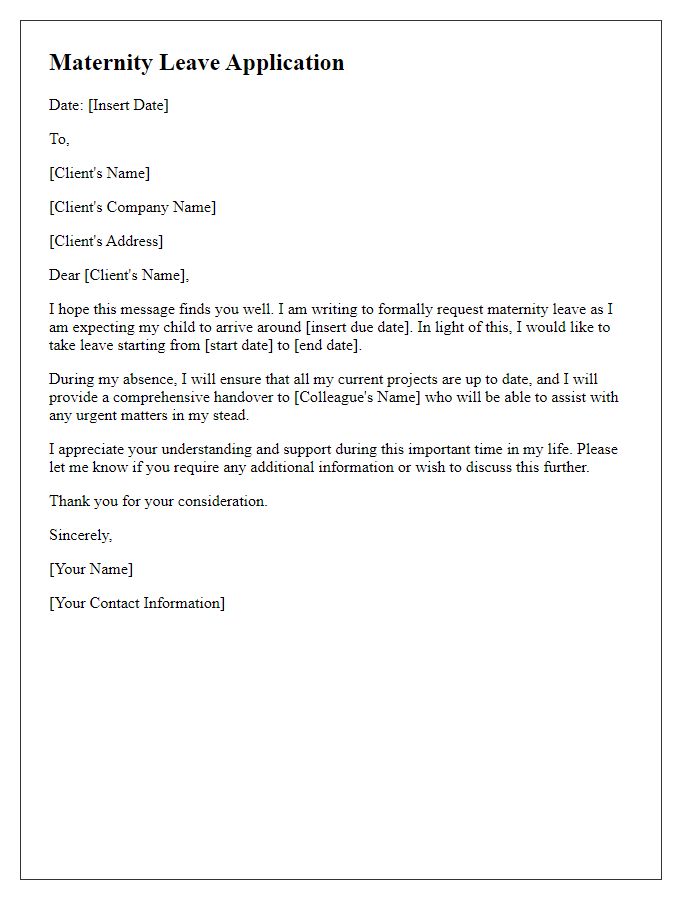
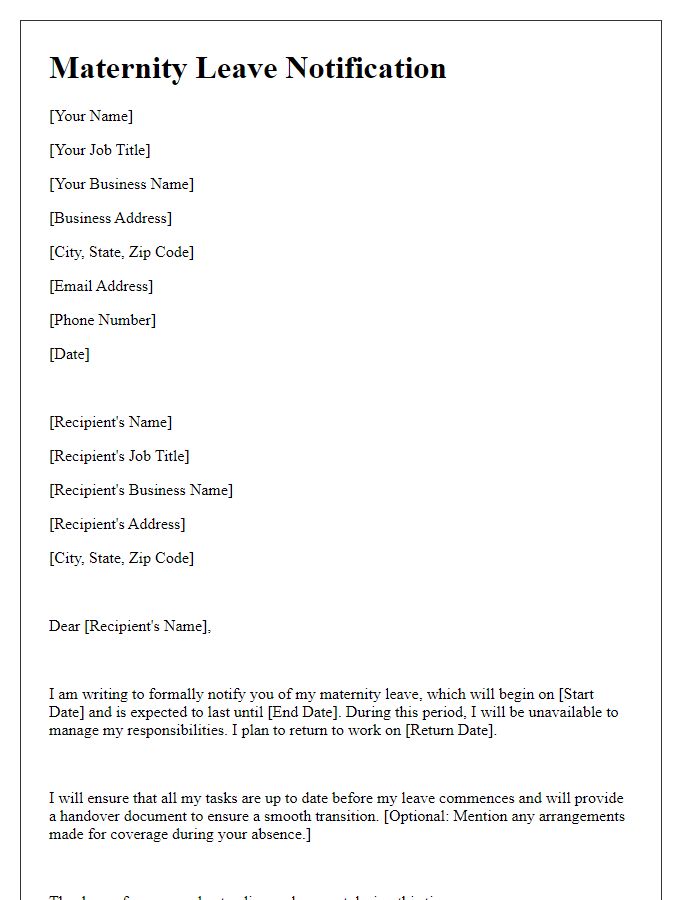

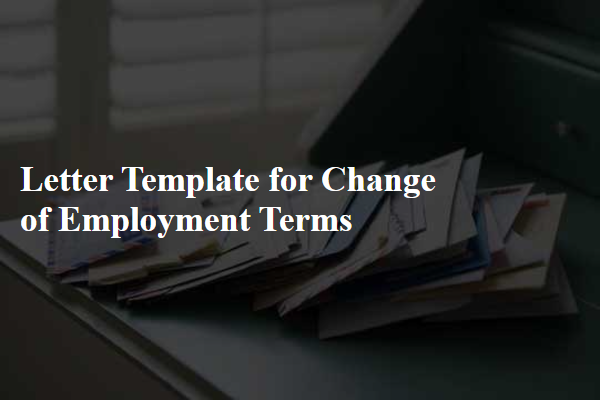
Comments